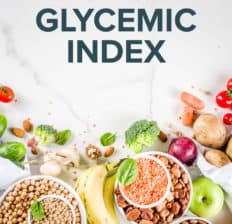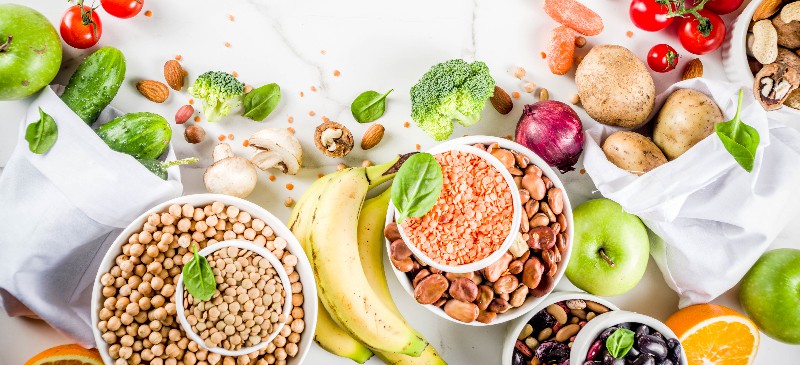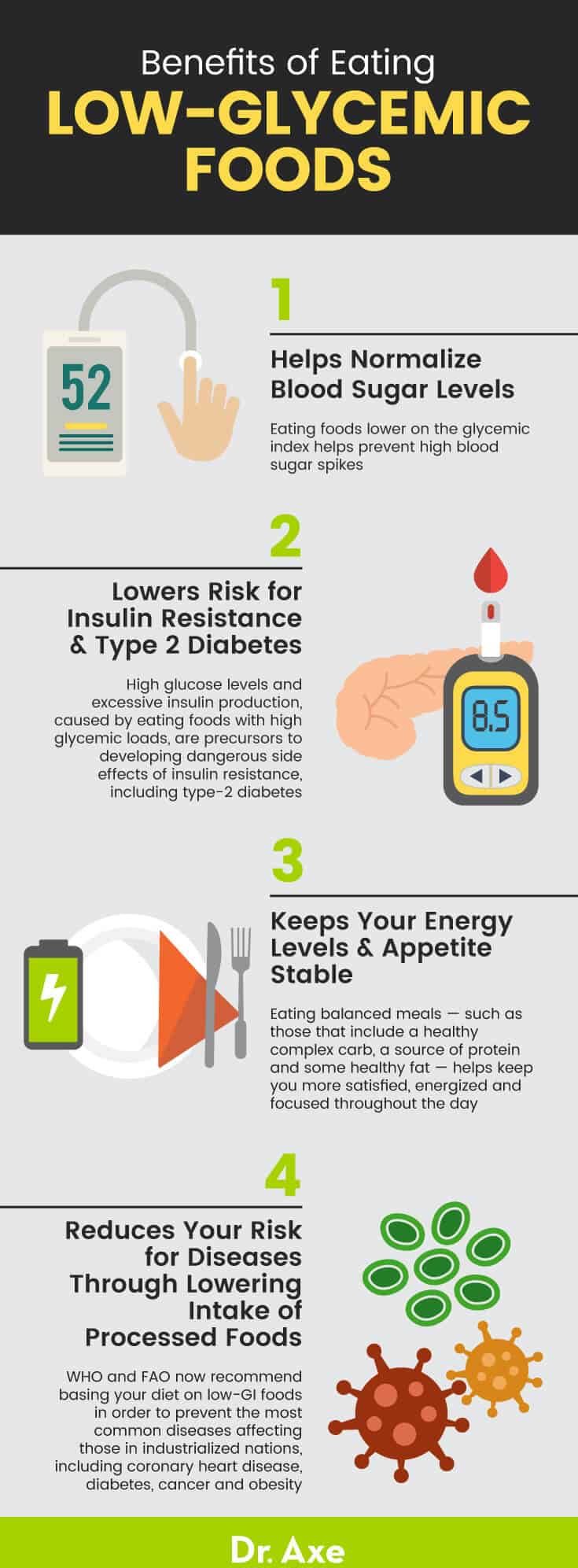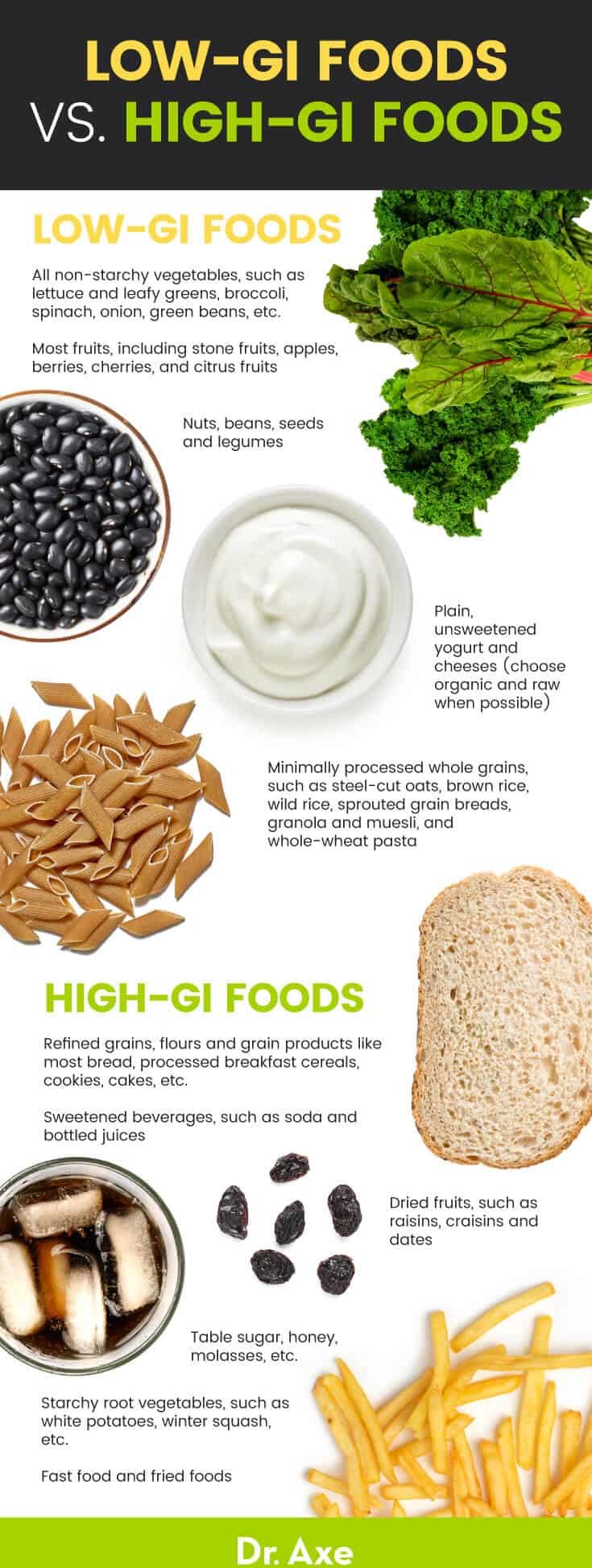


Did you know that according to the large-scale Nurses’ Health Study, women eating the highest glycemic load diets were much more likely to develop type 2 diabetes or heart disease compared to women of the same age with the lowest glycemic load diets? This is a pretty startling statistic, especially considering the rapid rise in foods high on the glycemic index — such as table sugar, juices and refined grains — in the average diet recently.
Today, you can’t open the newspaper, flip through a magazine or even surf the web without seeing nutrition advice or promotions for a specific diet. We often hear about the exponential increase in obesity and type 2 diabetes among adults of all ages.
In other words, most of us are aware of growing health problems in industrialized nations related to increasing rates of weight gain/obesity, declining quality and quantity of nutrients in the diet, and other problems like environmental toxicity.
Bombarded with scary statistics about weight gain, diabetes, high cholesterol and heart disease, it can seem overwhelming to start revamping your diet — or even worse, very hard to find reliable dietary advice. If you feel frozen into inaction due to all the conflicting dietary theories out there, try simply starting with the basics: understanding the glycemic index scale and glycemic loads of different common foods, and then learning about how these both impact everything from your cravings and energy levels to weight and concentration.
What Is the Glycemic Index?
When it comes to how quickly we metabolize different carbohydrates, it all begins with the glycemic index (GI) and glycemic loads of different foods. The glycemic index definition is “a measure of the blood glucose-raising potential of the carbohydrate content of a food compared to a reference food (generally pure glucose, or sugar).”
Ad


In very simple terms, a food’s GI measure (or GI score) tells you how quickly the food is converted into sugar once you eat it. Every time you eat a food containing carbs, you experience a change in blood sugar. However, responses to eating certain carbohydrates can be very different from eating others, depending on factors like how much sugar they contain, how processed they are, their fiber content and what other types of foods you pair them with.
There’s a glycemic index number for virtually every food out there. Things like meat, oils and fats have a GI of zero, since they contain no carbs. Carbohydrate-containing foods fall into different GI categories based on scientific measurements of glucose in the blood before, and then after, consuming each food.
Generally speaking, when you eat foods high on the glycemic index scale, you experience a faster, more significant increase in your blood glucose levels. When you eat foods lower on the GI, the increase in blood sugar is slower and more sustained.
This process has an effect on how you feel after eating the food, including how satisfied or full you are, how quickly you get hungry again, and how much of a lift in energy the food tends to provide.
Glycemic Index vs. Glycemic Load
So how does the glycemic index vs. load of foods compare? Glycemic index is a measure of how quickly certain foods are broken down into sugar in the bloodstream. However, the glycemic index of foods doesn’t take into account other factors that can affect blood sugar levels in the body.
Glycemic load, on the other hand, is a measure of how much certain foods can impact blood sugar levels, using both the glycemic index and the amount of carbs in a typical serving. Unlike the glycemic index, the glycemic load considers both the quality and quantity of the carbohydrates you’re consuming to give a more accurate estimate of how foods influence blood sugar control.
Can GI Be Misleading?
According to experts at Harvard Medical School, the glycemic index of a food only tells part of the story, which is why the glycemic load is also important. Even when it comes to eating only complex carbs or only simple carbs, blood sugar changes due to eating one type can be quite different than when eating another type.
The glycemic index also doesn’t take the amount of carbs consumed into account, which can also impact blood sugar levels. This is where the glycemic load (GL) comes into play.
Many of the fruits and vegetables that are high on the GI scale come in low on the GL scale. This shows why GL is a more accurate representation of which carbohydrates are healthy for blood sugar levels and which are not.
On the other hand, most processed, fake foods come in high on the GI and high on the GL — a good indication you want to avoid them. You should avoid processed foods for numerous reasons, and this is just one more to add to the list.
Meaning Behind the “Glycemic Load” of Different Foods
The glycemic load takes into account the GI score of a particular carbohydrate but also considers how the carbs in the food affect blood sugar levels when eaten in average portions (plus the scores change when eaten with other foods as part of a complete meal).
In other words, in real-world situations when we usually eat moderate serving sizes and more than one food at a time, understanding the glycemic load of a meal gives you a clearer and more thorough picture of what particular foods will do to your blood sugar. Just like with GI scores, the higher a food’s glycemic load ranking, the more dramatic the blood glucose increase is and therefore more insulin is needed.
The opposite is also true: The lower the food or meal is on the GL scale, the slower the blood glucose increase is and less insulin is needed by the body to return blood sugar to stable levels.


Glycemic Index and Glycemic Load Chart
So what are high glycemic foods and what foods are low GI? To determine a where a food falls on the glycemic index chart, portions of the food containing 50–100 grams of available carbohydrates are fed to healthy people (without insulin resistance) after an overnight fast. All foods containing glucose, fructose or sucrose (various forms of carbohydrates or sugars) can be classified as high GI, moderate GI or low GI. The glycemic index ranges from 0–100:
READ RELATED: The Negative Impacts of Refined Carbs on the Body
- High GI = 70 to 100
- Medium GI = 50 to 70
- Low GI = below 50
Meanwhile, GL is determined by how much carbohydrate is in an individual serving of a food. The glycemic load is determined by multiplying the grams of a carbohydrate in a serving by the glycemic index number, then dividing the total by 100. The end result is a glycemic load score that’s a better predictor of whether or not a food eaten in moderate amounts is healthy or not.
Ad


- High GL = 20 +
- Medium GL = 11 to 19
- Low GL = 10 or less
GI Food Chart of 100 Foods
Courtesy of research published by the U.S. National Cancer Institute, Oregon State University and the University of Sydney, below is a list of examples of common carbohydrate foods along with their glycemic load values (per average serving). This is only a short list of foods and their GI, however for a comprehensive list of more than 2,480 foods you can refer to the Mendosa website here.
Remember that foods are ranked in descending order of their glycemic index values based on average servings, with high-GI foods at the top and foods with low glycemic index toward the bottom of the table. The reason the numbers listed are not in order is because these represent the glycemic loads of foods (taking into account how they actually affect your blood sugar).
So what are the best low glycemic fruits? And what is the brown rice glycemic index, sweet potato glycemic index and banana glycemic index? Check out this comprehensive glycemic index food list for the GI values of 100 common foods that may be in your kitchen.
Grains/Starches
- White wheat bread: 75
- White rice: 73
- Whole wheat bread: 72
- Brown rice: 68
- Couscous: 65
- Corn tortilla: 52
- White spaghetti: 50
- White quinoa: 50
- Wholemeal spaghetti: 42
- Wheat tortilla: 30
Fruits
- Watermelon: 76
- Pineapple: 66
- Mango: 51
- Banana: 50
- Nectarine: 43
- Strawberries: 40
- Orange: 40
- Apple: 34
- Pear: 33
- Peach: 28
Vegetables
- Red potatoes, boiled: 89
- Mashed potato: 83
- Sweet potato: 77
- Taro, boiled: 56
- Sweet corn: 55
- Parsnips, boiled: 52
- Butternut pumpkin, boiled: 51
- Plantain, boiled: 39
- Yam, boiled: 35
- Carrots, boiled: 33
Dairy Products
- Ice cream: 51
- Yoghurt, fruit-flavored: 42
- Natural yogurt, low-fat: 35
- Milk, full-fat: 34
- Milk, skim: 32
Legumes
- Baked beans: 40
- Pinto beans: 39
- Butter beans: 36
- Lima beans: 32
- Lentils: 32
- Navy beans: 31
- Mung beans: 31
- Black beans: 30
- Kidney beans: 29
- Chickpeas: 28
Cereals
- Cornflakes: 74
- Cheerios: 74
- Muesli: 64
- Rolled oats, uncooked: 59
- Bran cereal: 43
Beverages
- Gatorade: 78
- Fruit punch: 67
- Coca Cola: 63
- Coconut water: 55
- Orange juice: 50
- Vegetable juice: 43
- Prune juice: 43
- Apple juice: 41
- Tomato juice: 33
- Fruit smoothie: 32
Baked Goods
- Scones: 92
- Waffles: 76
- Doughnut: 75
- Oatmeal muffin: 69
- Crumpet: 69
- Angel food cake: 67
- Pancakes: 66
- Flan cake: 65
- Chocolate chip muffin: 52
- Blueberry muffin: 50
- Banana cake: 47
- Sponge cake: 46
- Butter croissant: 46
- Vanilla cake with frosting: 42
- Pound cake: 38
Candy
- Jelly beans: 80
- Licorice: 78
- Skittles: 70
- Milk Way: 62
- Chocolate: 49
- Twix: 44
- Peanut M&Ms: 33
- Dark chocolate: 23
- Fruit and nut mix: 15
- Candied ginger: 10
Snack Foods
- Rice cracker: 91
- Pretzels: 83
- Puffed rice cakes: 82
- Corn chips: 74
- Graham wafers: 74
- Pop Tarts: 70
- Potato chips: 60
- Popcorn: 55
- Granola bars: 50
- Chickpea chips: 44
Sweeteners
- Maltose: 105
- Golden syrup: 63
- Honey: 58
- Maple syrup: 54
- Agave nectar: 11
4 Benefits of Eating Low-Glycemic Foods
1. Helps Normalize Blood Sugar Levels
There are many reasons why you should be concerned about living with consistently high blood sugar levels. The first is increased insulin production. When glucose levels in the bloodstream rise, the hormone insulin is produced and secreted. Insulin has the role of bringing glucose out of the bloodstream and into cells in order to be used for energy.
The higher the level of glucose in your blood, the more insulin is released in order to bring things back to balance. Therefore, a high amount of insulin being released leads to a sudden and sharp drop in blood glucose levels.
This is referred to as hypoglycemia, which can follow high blood sugar spikes, causing symptoms like low energy dips, trouble concentrating, mood swings and sudden hunger. Eating foods lower on the glycemic index helps prevent this from happening, as it results in less amounts of insulin needed by the body in order to maintain homeostasis.
2. Lowers Risk for Insulin Resistance and Type 2 Diabetes
It’s now believed that high glucose levels and excessive insulin production (which go hand in hand with high glucose levels) are precursors to developing dangerous side effects of insulin resistance, including type-2 diabetes. It’s vital to watch what you eat if you want to stay healthy into older age, live a pain- and disease-free life, and reduce your risk for chronic diseases.
In particular, those who already have prediabetes or are at risk for diabetes need to pay extra attention to how their diets impacts their blood glucose levels.
3. Keeps Energy Levels and Appetite Stable
The University of Sydney states, “Low glycemic index foods have benefits for weight control because they help control appetite and delay hunger.” When it comes to how different carbs make you feel, glycemic loads can make a real difference too.
It’s possible to experience symptoms of both hyperglycemia and hypoglycemia when blood sugar levels aren’t properly managed. Over time, these come with complications and tend to cause many uncomfortable symptoms — including fatigue, sugar cravings, changes in blood pressure, weight loss or gain, nerve damage, and jitteriness or nervousness.
You might notice that when you only eat simple carbs (such as sugary cereal for breakfast) and don’t get enough fiber, you’re quickly tired and hungry afterward. On the other hand, eating balanced meals — such as those that include a healthy complex carb, a source of protein and some healthy fat — helps keep you more satisfied, energized and focused throughout the day.
4. Reduces Your Risk for Diseases Through Lowering Intake of Processed Foods
Processed foods made with lots of added sugar and flour are usually the highest on the glycemic index. Therefore, if you’re looking to lower the GL of your diet, you’ll automatically cut out lots of empty calories as well.
The World Health Organization and Food and Agriculture Organization now recommend basing your diet on low-GI foods in order to prevent the most common diseases affecting those in industrialized nations — including coronary heart disease, diabetes, cancer and obesity. To reduce the glycemic load of your diet, experts recommend making some of the following changes:
- Consume unprocessed or ancient whole grains, but lower intake of flour and white refined grains.
- Eat more beans, legumes, nuts and seeds, especially in place of processed grains.
- Eat smaller amounts of potatoes, rice, or other grains and bread. Instead consume more veggies to feel just as satisfied.
- Reduce or avoid sugary foods like soda, cookies, cakes, candy, other desserts and sweetened drinks.
Low-GI Foods vs. High-GI Foods
Low-GI Foods:
- All non-starchy vegetables, such as lettuce and leafy greens, broccoli, spinach, onion, green beans, etc.
- Most fruits, including stone fruits, apples, berries, cherries, and citrus fruits
- Nuts, beans, seeds and legumes
- Plain, unsweetened yogurt and cheeses (choose organic and raw when possible)
- Minimally processed whole grains, such as steel-cut oats, brown rice, wild rice, sprouted grain breads, granola and muesli, and whole-wheat pasta
High-GI Foods:
- Refined grains, flours and grain products like most bread, processed breakfast cereals, cookies, cakes, etc.
- Sweetened beverages, such as soda and bottled juices
- Table sugar, honey, molasses, etc. A small amount of real, raw honey can be a good option, but in this case less is usually more.
- Dried fruits, such as raisins, craisins and dates (OK in small amounts, just watch your portion sizes!)
- Starchy root vegetables, such as white potatoes, winter squash, etc. These are actually healthy options, but portion control and pairing them with lower-GI foods is key.
- Empty calories, including packaged goods that are highly processed and salty
- Lots of added sugar in condiments, sauces, etc.
- Fast food and fried foods
Keep in mind that in addition to considering the glycemic index score of the individual foods you eat, how you combine different foods is very important. Foods to pair together that can be helpful for managing blood sugar levels, energy and hunger include:
- High-fiber foods: Common examples include artichokes, green leafy vegetables, chia seeds, flaxseeds, beans, apples, pumpkin seeds, almonds, avocado and sweet potatoes are good choices.
- Moderate serving of healthy complex carbs (about 1/2 cup at a time): Carbohydrates are the main dietary source of glucose, but not all carbs are created equal. Good choices include brown or wild rice, sweet potatoes, sprouted ancient grains and legumes.
- Vegetables and whole pieces of fruit: Fresh fruit is a better choice over fruit juices.
- Healthy fats: Sources include virgin coconut oil, MCT oil, extra virgin olive oil, nuts and seeds (like almonds, chia, hemp and flax), and avocado.
- Quality protein: Wild fish, such as salmon, free-range eggs, grass-fed beef or lamb, raw dairy products (including yogurt, kefir or raw cheeses), and pasture-raised poultry are some of the best protein foods.
- Certain acids: Acidic foods seem to help to lower the GI of certain foods. Experts recommend trying vinegar-based dressings on salads, apple cider vinegar taken with a smoothie or water, fermented yogurt with cereal, and lemon juice on vegetables.


Precautions Regarding a Low-Glycemic Diet
Keep in mind that we need some carbohydrates, specifically unprocessed types, for things like energy and strength. We all know the infamous saying, “An apple a day keeps the doctor away.” Despite the glycemic index of fruits like apples, peaches, strawberries and other whole foods that have sugar or carbs in them, these are, in fact, healthy foods offering an abundance of nutrients the body needs. So to avoid all simple carbs as a strict rule would mean eliminating these and other healthy simple carbs from your diet.
This is where the glycemic index and the glycemic load may become complicated, but they don’t have to be. Dietitians, doctors, scientists and researchers realized that there are simple carbs that are good for you and complex carbs that can cause unhealthy responses in the body.
When it comes to deciding which foods are best, keep things simple by using common sense and choosing those that are the least processed. Fruits, ancient whole grains, sweet potatoes and other foods high on the glycemic index list don’t need to be removed from your diet — it’s all about balance and eating real foods as part of a well-rounded, low-glycemic diet.
There are many charts, scales, measurements and glycemic index calculator tools when it comes to foods we should eat and ones we should avoid. If you follow these recommendations to eat plenty (and a variety of) real foods and avoid processed foods, then you won’t have to pay too much attention every time a new scale or chart makes the news. You’ll be eating from nature, just the way your body was intended to!
Final Thoughts
- What does high glycemic mean? A food’s glycemic index score tells you how quickly the food is converted into sugar once you eat it. Many of the fruits and vegetables that are high on the glycemic index scale come in low on the glycemic load scale. GL represents the actual impact one average serving size of a carbohydrate food has on your blood sugar, so GL is a more accurate representation compared to GI in most cases when it comes to determining which carbohydrates are healthy.
- A low-glycemic index diet can help normalize blood sugar, prevent insulin resistance, and keep you full and energized for longer.
- What are high glycemic foods? Refined grains, sweetened beverages, dried fruits and processed foods typically have a higher glycemic index than foods like whole grains, veggies, nuts, seeds and legumes.
- To reduce the glycemic load of your diet, experts recommend making some of the following changes: Consume unprocessed grains, but lower intake of flour and white refined grains; eat more beans, legumes, nuts and seeds; eat smaller amounts of starchy foods like potatoes, rice and bread; reduce or avoid sugary foods like cookies, cakes, candy and soft drinks; and pair foods with a high glycemic index with proteins and healthy fats to make the meal more satisfying.
!function(f,b,e,v,n,t,s)
{if(f.fbq)return;n=f.fbq=function(){n.callMethod?
n.callMethod.apply(n,arguments):n.queue.push(arguments)};
if(!f._fbq)f._fbq=n;n.push=n;n.loaded=!0;n.version=’2.0′;
n.queue=[];t=b.createElement(e);t.async=!0;
t.src=v;s=b.getElementsByTagName(e)[0];
s.parentNode.insertBefore(t,s)}(window, document,’script’,
‘
fbq(‘init’, ‘3475171552810057’);
fbq(‘track’, ‘PageView’);




